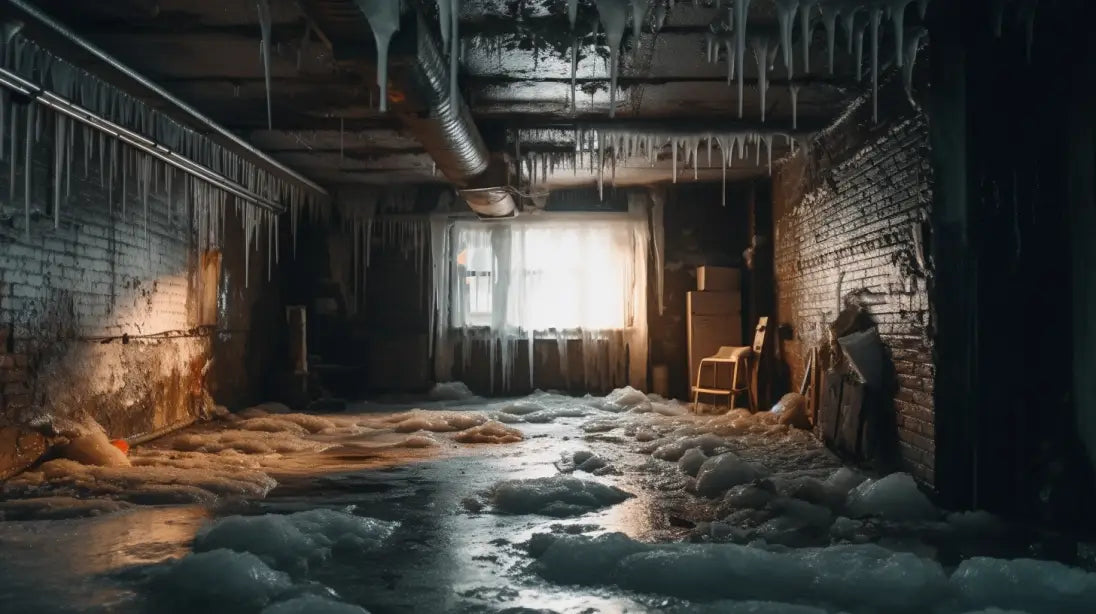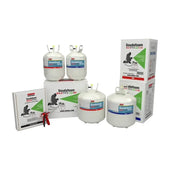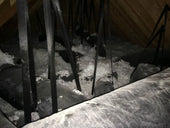Pipes play a crucial role in ensuring the smooth flow of water in your home. However, with the cold temperatures in the UK, pipes can freeze, which can cause serious problems. One effective solution to prevent pipes from freezing is lagging. In this article, we'll discuss what pipe lagging is, why it's important, and when you should consider lagging your pipes.
What is Pipe Lagging?
Pipe lagging refers to the process of insulating pipes to prevent heat loss and freezing. This insulation material can be made of foam, fiberglass, or other materials that are effective at trapping heat. Lagging can be applied to both hot and cold water pipes to improve energy efficiency and reduce the risk of freezing.
Why is Pipe Lagging Important?
Pipe lagging is essential for several reasons. First, it prevents heat loss and ensures that hot water is delivered more efficiently, which can reduce energy bills. Additionally, it prevents pipes from freezing and bursting, which can cause significant damage to your home and result in costly repairs. Properly lagged pipes also reduce the risk of condensation and dampness, which can lead to mold growth and structural damage.
Signs You Need to Lag Your Pipes
There are several signs that indicate you need to lag your pipes. These include:
- Cold water coming out of your taps
- Low water pressure
- Damp or wet areas around your pipes
- Condensation on your pipes
- Unusual noises coming from your pipes
- Higher than usual energy bills
When Should Pipes Be Lagged?
In the UK, pipes should be lagged when temperatures fall below 0°C. This is because water in pipes can freeze at this temperature, which can cause the pipes to burst. It's important to lag pipes before the cold weather sets in to prevent any damage to your pipes and home. If you're unsure whether your pipes need lagging, it's always best to seek advice from a professional plumber.
How to Lag Pipes
Lagging pipes is a relatively simple process that can be done by a professional plumber or a DIY enthusiast. To lag your pipes, you will need:
- Pipe lagging material
- Insulation tape
- Scissors
- Measuring tape
To lag your pipes, follow these steps:
- Measure the length of the pipe you want to lag
- Cut the lagging material to the appropriate length
- Wrap the lagging material around the pipe, making sure there are no gaps
- Secure the lagging material with insulation tape
- Repeat the process for any other pipes you want to lag
Benefits of Lagging Pipes
Lagging your pipes has several benefits, including:
- Improved energy efficiency
- Reduced risk of freezing and bursting pipes
- Lower energy bills
- Reduced risk of condensation and dampness
- Improved water temperature and pressure
Common Mistakes to Avoid When Lagging Pipes
When lagging pipes, there are several common mistakes to avoid, including:
- Using the wrong type of lagging material
- Not lagging all of the pipes in your home
- Leaving gaps in the lagging material
- Not securing the lagging material properly
- Lagging over any leaks or damage
Conclusion
Pipe lagging is a simple and effective way to protect your pipes from freezing and bursting, improve energy efficiency, and reduce your energy bills. It's important to lag pipes before the cold weather sets in to prevent any damage to your pipes and home. Signs that indicate you need to lag your pipes include cold water coming out of your taps, low water pressure, damp or wet areas around your pipes, condensation on your pipes, unusual noises coming from your pipes, and higher than usual energy bills. Lagging your pipes has several benefits, including improved energy efficiency, reduced risk of freezing and bursting pipes, lower energy bills, reduced risk of condensation and dampness, and improved water temperature and pressure.
FAQs
-
Can I lag my pipes myself, or do I need to hire a professional plumber?
It's possible to lag your pipes yourself, but if you're unsure or have any doubts, it's always best to seek advice from a professional plumber.
-
What is the best material to use for pipe lagging?
Foam and fiberglass are both effective materials for pipe lagging. It's important to choose a material that is suitable for the specific needs of your pipes and home.
-
How often do I need to lag my pipes?
It's recommended to lag your pipes every few years, or as needed based on changes in weather and other factors.
-
Can lagging my pipes improve my water pressure?
Yes, lagging your pipes can improve water pressure by preventing heat loss and ensuring that hot water is delivered more efficiently.
-
Is lagging my pipes expensive?
The cost of lagging your pipes can vary depending on the size of your home and the type of material used. However, the benefits of lagging your pipes far outweigh the cost in the long run.





















































